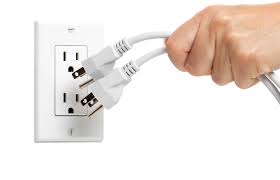You pay your electric bill every month—but what if part of that money was slipping away into devices you thought were off?
Hidden throughout your home, dozens of common electronics quietly sip power around the clock. It’s called vampire power—and while it may sound like a spooky myth, it’s a very real, very sneaky drain on your wallet.
What Is Vampire Power?

Also known as phantom load or standby power, vampire power refers to the electricity used by electronics that are turned “off” but still plugged in. If a device has a glowing light, a digital clock, remote readiness, or a sleep mode, chances are it’s using energy even when idle.
The Usual Suspects
Here’s how much standby power some everyday devices can use:
Cable box/DVR: 20–30 watts
Gaming consoles (rest mode): 10–15 watts
Desktop computers (sleep mode): 5–21 watts
Microwave clocks: 3–7 watts
Chargers (plugged in, not charging): 0.1–1 watt
While each device alone may not seem like much, together they can significantly impact your electric bill.
Does It Really Add Up?
Absolutely. Standby power can account for 5–10% of your home’s electricity use—which could mean $50 to $150 per year wasted on energy you didn’t actually use. And in tech-heavy households? Even more.
Example:
A DVR using 20 watts continuously consumes about 175 kWh per year. At $0.20 per kWh, that’s $35 a year—for one device, doing nothing.
What Not to Unplug
Some appliances should stay on for safety or functionality:
Refrigerators and freezers
Wi-Fi routers and modems
Smoke and carbon monoxide detectors
Medical equipment
Home security systems
Smart home hubs (if critical to automation)
Simple Ways to Slay Vampire Power
You don’t have to unplug everything—just focus on high-drain devices and ones you rarely use. Here’s how:
Use smart power strips: Ideal for TVs, consoles, and sound systems. When the TV powers down, the rest follow.
Unplug rarely used devices: Think printers, guest room electronics, air purifiers, or garage fridges.
Tweak settings: Disable “instant-on” modes on gaming systems or shorten sleep timers on PCs.
Add smart plugs or timers: Let lamps, fans, and space heaters shut off automatically when not in use.
Unplug idle chargers: They may draw only a trickle, but every little bit adds up—and reduces heat and clutter.
Want Proof?
Pick up a plug-in electricity monitor (like the Kill A Watt). Plug your devices in and compare how much energy they use when active vs. when idle. It’s an eye-opening exercise—and a fast way to spot your home’s biggest standby energy hogs.
Conclusion
Unplugging devices can save money—but it’s not about pulling every plug in your house. It’s about being strategic. Target the top offenders, make use of smart tech, and fine-tune your settings. Without much effort, you could save up to $150 a year—all while reducing clutter, extending the life of your devices, and lightening your environmental footprint.
Bottom line?
Vampire power might be invisible, but it’s not harmless. Take a few smart steps now, and you’ll finally stake those energy suckers—for good.
